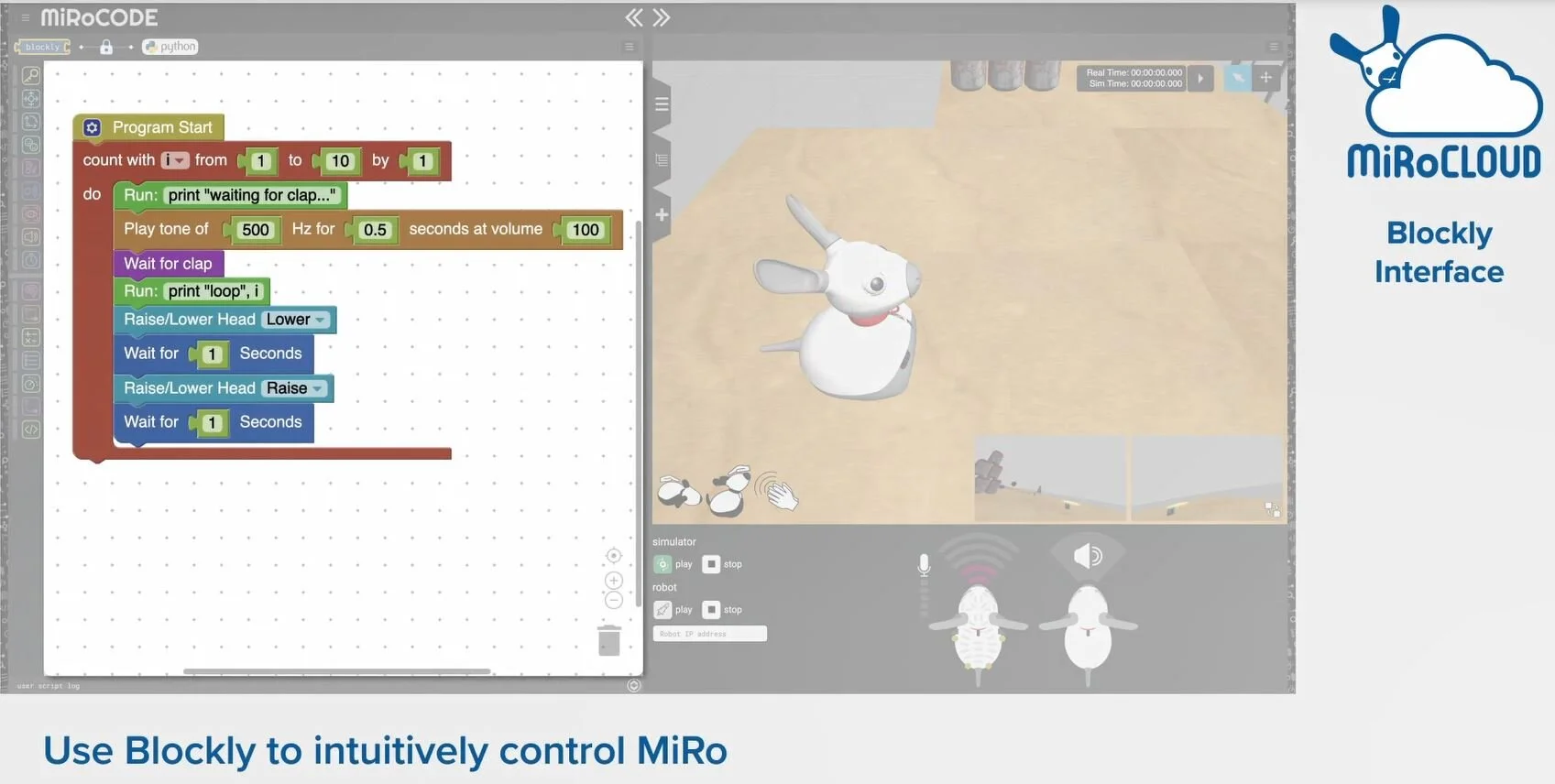Michael Szollosy, Research Fellow at Sheffield Robotics and a regular MiRo user has been developing his research on the cultural perceptions and impacts of robots. Here, he speaks about why he thinks MiRo is a unique robotic platform.
1. MiRo as a Social Care Robot
MiRo was initially developed with a particular focus on solving the problems of dealing with Britain's ageing population, and the need to provide care to ever-increasing numbers of people that need help looking after themselves. Through our work on earlier social care robots, like Paro, researchers at Sheffield Robotics developed a picture of what is needed for an effective robot than can help look after humans. (Robots are always intended to supplement human care, never replace it.)
By mimicking the behaviours and responses of animals, MiRo can provide the psychological and emotional benefits of a pet, without any of the problems associated with such biological creature. For example, the worst thing that will happen with MiRo if someone forgets to 'feed' it is that it's batteries will run out, which can easily be recharged; and MiRo doesn't need to be taken for a walk, so its perfect for anyone who is bound to a small apartment or care home.
For advanced programmers, MiRo can be programmed for greater situational awareness, including speech and facial recognition, and the ability to analyse mood and body language, detecting abnormal stress or excitement and much much more. These functionalities will create a greater emotional relationship with its owners, which may also include monitors to keep an eye on the vital signs of its owner, or remind them when to take medication.
2. MiRo as an Educational Robot
It soon became clear working with MiRo and taking it to museums and festivals that everyone loves MiRo - especially children and young adults.
So it became clear that MiRo could be an effective tool to encourage children into STEM subjects (Science, Technology, Engineering, Maths) and into coding. So the MiRo team developed MiRoCLOUD, the online educational portal to learn coding. Designed for remote learning, schools and universities can teach their students how to code from anywhere and at any time. Students can log onto MiRoCLOUD, via the internet, on any computer, laptop or tablet to gain access to our user-friendly and fun educational portal to learn coding.
Teachers can provide MiRoCLOUD log ins for each student, allowing pupils to create their own programs or use teacher set materials and run simulations on their virtual MiRo. MiRoCLOUD allows programmers to access most of Miro's sensors (visual, auditory, tactile, cliff, light, sonar). Learners can then run their coding on the MiRo robot to experience the power of their coding. The MiRo team will be offering MiRoCLOUD trials very soon, so please sign up below to learn more.
But MiRo can also be used in special education situations as well. Sheffield Robotics has long been involved in research looking at the educational potential of robotics, and there is already a lot of research into using robots with special needs children, such as autistic pupils. We're in the process now of working with partners that want to use MiRo in specific (as well as general) educational contexts, so we can test MiRo's effectiveness in such environments.
3. MiRo as a Research Platform
Sheffield Robotics has a keen interest in building living machines on biomimetic principles - that is, mirroring or imitating some of the features and characteristics of animals found in nature. A lot of work has gone into building MiRo as a new kind of robot that is made more 'lifelike', not just in its behaviour but also in its architecture. MiRo was therefore developed - or we might say, 'evolved' - like other creatures with a sophisticated brain structure: First, basic motor functions and sensory perceptions were implanted in network of circuits that were akin to mammalian brain stem. Next, the Consequential Robotics team developed for MiRo a more sophisticated programming that roughly mirrors the functions of the basal ganglia - that part of the brain that controls emotions, routine behaviours and voluntary functions.
The brain/basal ganglia representation
The next step in MiRo's evolution - which is already well underway - will involve the development of programs that mirror the function of the prefrontal cortex of the mammalian brain, that part of the brain that deals with problem solving, sophisticated decision making and social behaviour.
Thus, because it has a brain architecture like that of a small mammal, MiRo has attracted the interest of many researchers into brains, particularly those involved in the flagship European Human Brain Project. Many researchers (for example, at Bristol Robotics Laboratory, where MiRo has been co-developed, and at the Institute of Biophysics in Palermo, Italy) are hoping to model certain brain functions - such as some of those of the hippocampus - through MiRo. MiRo's existing 'brain' structures make it easy to add certain features, such as memory or aspects of learning, so that researchers can learn more about those parts of the brain, how they function in certain animals (including humans), and how to build models that simulate those functions.
Those are just some ideas on how MiRo will be used by different people in a variety of ways in the near future. But don't let it stop there! If you have any ideas on new ways we can use MiRo, please let us know!





